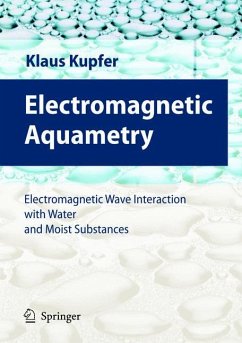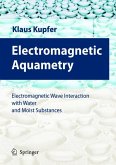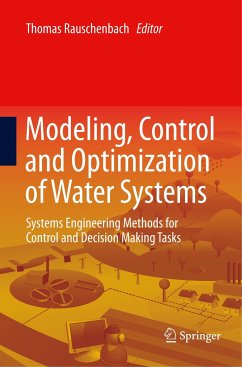This book covers all aspects of Electromagnetic Aquametry. It summarizes the wide area of metrology and its applications in electromagnetic sensing of moist materials. The physical properties of water in various degrees of binding interacting with electromagnetic fields is presented by model systems. The book describes measurement methods and sensors in the frequency domain, TDR-techniques for environmental problems, methods and sensors for quality assessment of biological substances, and nuclear magnetic resonance techniques. Environmental sciences, as well as civil and geoengineering, fossil fuels, food and pharmaceutical science are the main fields of application. A very wide frequency sprectrum is used for dielectric measurement methods, but the microwave range is clearly dominant. Multiparameter methods as well as methods of principal components and artificial neural networks for density independent measurements are described.
Mformation about a material can be gathered from its interaction with electromagnetic waves. The information may be stored in the amplitude, the phase, the polarisation, the angular distribution of energy transportation or the spectral characteristics. When re trieved from the wave, certain material properties may thus be determined indirectly. Compared on the one hand to direct material analysis, an indirect method requires calibration and is prone to interference from undesired sources. On the other hand, however, it permits the determination of features inaccessible by direct methods, such as non-destructive material interrogation, high measurement speed, or deep penetration depth. However, being a physical method, the use of electromagnetic waves is still handicapped by the lack of acceptance by many chemists, who are used to applying direct approaches. Historically, the first application of electromagnetic wave interaction with mat ter involved measurement of amplitude changes at a single frequency caused by material properties, and it is still used today by some systems. This approach was soon supplemented by single frequency phase measurements, in order to avoid distortions through amplitude instabilities or parasitic reflections. Such single pa rameter measurements of course require dependence only on one variable in the measured process and sufficient stability of all other ancillary conditions. If that is not the case, the single parameter measurement fails.
Mformation about a material can be gathered from its interaction with electromagnetic waves. The information may be stored in the amplitude, the phase, the polarisation, the angular distribution of energy transportation or the spectral characteristics. When re trieved from the wave, certain material properties may thus be determined indirectly. Compared on the one hand to direct material analysis, an indirect method requires calibration and is prone to interference from undesired sources. On the other hand, however, it permits the determination of features inaccessible by direct methods, such as non-destructive material interrogation, high measurement speed, or deep penetration depth. However, being a physical method, the use of electromagnetic waves is still handicapped by the lack of acceptance by many chemists, who are used to applying direct approaches. Historically, the first application of electromagnetic wave interaction with mat ter involved measurement of amplitude changes at a single frequency caused by material properties, and it is still used today by some systems. This approach was soon supplemented by single frequency phase measurements, in order to avoid distortions through amplitude instabilities or parasitic reflections. Such single pa rameter measurements of course require dependence only on one variable in the measured process and sufficient stability of all other ancillary conditions. If that is not the case, the single parameter measurement fails.








